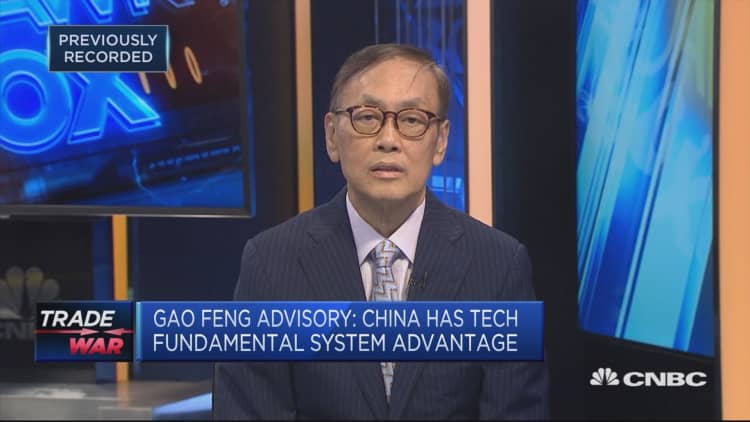For all the political tensions about trade, American-based venture capitalists are still pouring money into Chinese start-ups.
Venture capital flows between the U.S. and China hit an estimated $22 billion last year, topping the year's $18 billion in completed two-way foreign direct investment for the first time, according to a report released Wednesday by the U.S.-China Investment Project. The research initiative is led by Rhodium Group and the National Committee on U.S.-China Relations.
The bulk of the start-up investments came from U.S.-owned firms, which roughly doubled their investments into Chinese companies between 2017 and 2018 to a record $19 billion, the report said.
"In China, American investors continued to utilize minority VC investments in 2018 to gain exposure to sectors that are off limits to full blown foreign takeovers or have powerful informal market entry barriers, for example digital payments, internet startups and other digital content," the authors said.
On the other hand, the research found Chinese foreign direct investment into the U.S. plunged more than 80% to just $5 billion last year, while American flows to China fell about 7% to $13 billion.
Increased scrutiny from both governments on such cross-border investments, and Beijing's efforts to stem capital outflows and debt buildup by some major conglomerates contributed to the drop.
The net effect is that U.S. firms invested more into China last year than the other way around, according to the report. One primary driver was renewed U.S. interest in Chinese real estate, including a search for distressed assets.
Key deals in U.S. foreign direct investment into China's real estate sector, which more than doubled to over $3 billion in 2018
- Blackstone's acquisition of Vivocity Mall.
- LaSalle's acquisition of Shanghai International Plaza.
- Warburg Pincus formed a $1 billion joint venture with Hande Group to pursue "special situations investments" in distressed Chinese real estate projects.
Source: US-China Investment Project
The researchers said they have a "positive" near-term outlook for U.S. foreign direct investment in China based on expected flow of deals. On the other hand, the researchers said Chinese investment appears relatively "depressed" but may be on an upward trend, given a 40% increase to $2.3 billion in the first quarter of this year from the final quarter of last year.
"It should be noted that portfolio investment provides a new bright spot in the two-way investment relationship," Stephen A. Orlins, president of the National Committee on U.S.-China Relations, wrote in a foreword to the report. "The high volume of flows in 2018 sends a clear signal that the commercial appetite for cross-border investment between our countries remains strong."
However, regulations from both Beijing and Washington and China's economic slowdown remain uncertainties for investors. Beijing passed a new foreign investment law in March and is expected to announce a revised "negative list" in June, both of which could increase U.S. businesses' access to China and put foreign companies on a more level playing field with their local competitors. Critics note the new law is vague and that what happens in practice in China is often more restrictive than what is stated up front.
The report also pointed out that the U.S. expanded its investment screening regime in August 2018 with the passage of the Foreign Investment Risk Review Modernization Act, which allows the Committee on Foreign Investment in the United States to look at foreign investment stakes below 10%. That would target Chinese venture capital investment in U.S. start-ups. U.S. President Donald Trump's administration is trying to maintain an American edge in global technological development.

China is increasingly producing some of the world's largest start-ups, just as the country's venture capital industry is developing.
The latest figures available showed assets under management by China-based venture capital climbed to a record high of $210 billion as of June 2018, according to data shared at the SuperReturn China conference in Beijing on Tuesday. Financial data company Preqin said that those China-based venture capital funds have outperformed their U.S. peers in the last several years.
But American-based venture firms had a hand in that phase of Chinese growth beginning in the early 2000s. The cross-border investment report pointed out: “Experienced U.S. venture investors have since played key roles in the development of China's modern technology sector, participating in funding rounds for at least one third of all Chinese venture-backed startups through the end of 2018."
US-China venture capital flows in 2018
- Chinese-owned VC funds participated in more than 270 unique U.S. funding rounds, contributing an estimated $3.6 billion.
- U.S.-owned venture investors participated in more than 330 unique Chinese venture funding rounds, investing a record estimated $19 billion.
Source: US-China Investment Project


